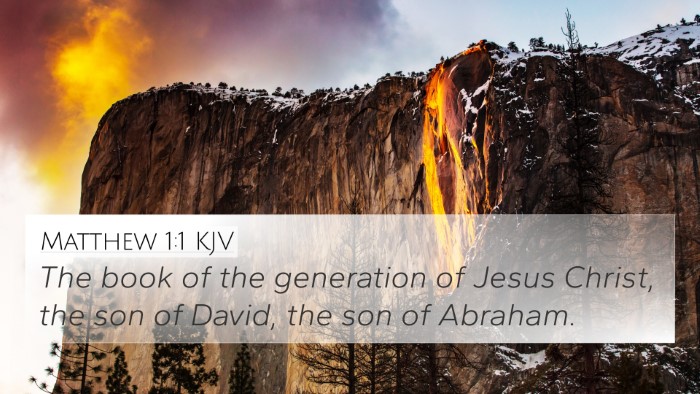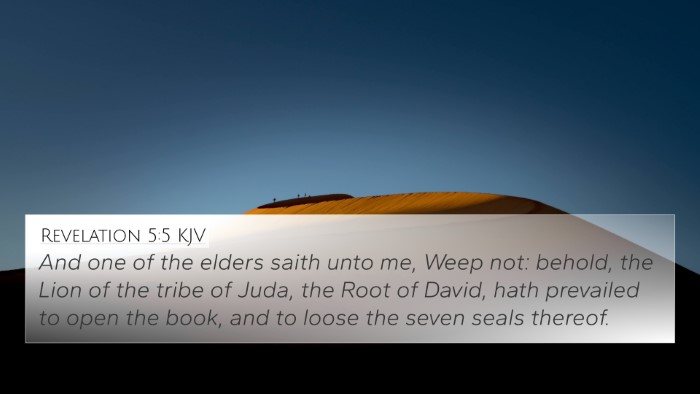Understanding 2 Timothy 2:8
Verse: "Remember that Jesus Christ, of the seed of David, was raised from the dead according to my gospel."
This verse encapsulates key themes of Jesus Christ's identity and resurrection, emphasizing the importance of remembering these truths in the Christian faith. Below is an interpretation based on insights from various public domain commentaries.
Key Themes and Interpretations
-
Identity of Christ:
Paul refers to Jesus as "the seed of David," acknowledging His Davidic lineage, which fulfills Old Testament prophecies regarding the Messiah. According to Matthew Henry, this lineage establishes Jesus' rightful place within the fulfillment of God's promises.
-
Resurrection:
In highlighting that Jesus "was raised from the dead," Paul emphasizes the centrality of the resurrection in Christian doctrine. Albert Barnes notes that the resurrection not only signifies victory over death but also serves as a pivotal element of the gospel that should be proclaimed and remembered by believers.
-
Call to Remember:
Paul's instruction to "remember" indicates the importance of reflection and adherence to the foundational truths of Christianity. Adam Clarke underscores this as a call to maintain focus on Christ's work, especially during trials and hardships.
Bible Verse Cross-References
2 Timothy 2:8 can be cross-referenced with several other Bible verses that illustrate similar themes:
- Romans 1:3-4: This passage speaks of Jesus' lineage and His resurrection, reinforcing the themes found in 2 Timothy.
- Luke 1:32-33: This verse prophesies Christ's reign and shows His connection to David.
- Acts 2:30-31: Peter affirms Jesus as the fulfillment of David's line, stressing the resurrection as a cornerstone of apostolic preaching.
- 1 Corinthians 15:3-4: Paul reiterates the Gospel's core — that Christ died for our sins and was raised on the third day.
- John 20:9: This verse recounts the disciples' realization of the resurrection, highlighting its significance.
- Revelation 22:16: Jesus identifies Himself as the Root and Offspring of David, linking back to the prophecy.
- Hebrews 7:14: The verse points out that Jesus sprang from Judah, affirming His royal heritage.
Connections Between Bible Verses
Thematic Connections: The themes of lineage, resurrection, and the task of remembrance weave through multiple scriptures, establishing a foundation for the Christian faith. By examining connections between Bible verses, believers can gain deeper insights into the coherence and unity of the Scriptures.
Comparative Bible Verse Analysis
When conducting a study of Pauline epistles, it is essential to recognize how 2 Timothy 2:8 interlinks with other letters of Paul. His continued emphasis on Christ’s resurrection throughout his letters reinforces the truthfulness of the gospel.
Scriptural Cross-Referencing: Tools for Bible cross-referencing, such as a concordance, can assist individuals in exploring these connections further. By creating a web of interrelated scriptures, one can appreciate the broader theological implications and teachings of the Bible.
Bible Reference Resources
For those seeking to explore cross-references in the Bible, utilizing a comprehensive Bible cross-reference guide can significantly enhance understanding. A Bible cross-reference system often includes thematic explorations and provides in-depth analyses of how passages interrelate.
Cross-Referencing Bible Study
With effective cross-referencing, believers can deepen their study and application of the Scriptures, engaging with both Old and New Testament themes:
- Identifying connections between Jesus and Old Testament prophecies.
- Investigation of the resurrection's implications highlighted throughout the New Testament.
- Comparative studies that draw parallels between passages in the Gospels and letters of Paul.
Final Thoughts
As followers of Christ, remembering His identity and resurrection is crucial. 2 Timothy 2:8 serves as a poignant reminder of these truths, enhancing our faith and understanding. By leveraging Bible cross-references, one can find a supportive framework for exploring and understanding the interconnectedness of biblical themes.


















